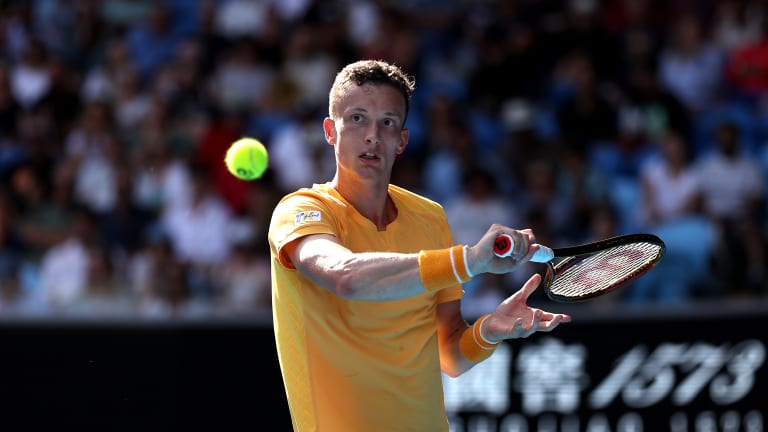Taylor Fritz, Jiri Lehecka more proof that the ATP's 21-and-under Next Gen concept has come of age
By Feb 20, 2023Brazil's Joao Fonseca, 18, captures Next Gen ATP Finals title with Rafael Nadal watching on
By Dec 23, 2024Joao Fonseca to play for Next Gen ATP Finals title a day after reconnecting with Rafael Nadal
By Dec 21, 2024WATCH: Jakub Mensik shook by mid-match doping test request during Next Gen ATP Finals
By Dec 20, 2024Top seed Arthur Fils, Newcomer of the Year Jakub Mensik land in same Next Gen ATP Finals group
By Dec 15, 2024Joao Fonseca rounds out 2024 Next Gen ATP Finals field led by Arthur Fils
By Dec 01, 2024With Medjedovic triumph, Next Gen Finals remains starmaker, springboard for ATP innovation
By Dec 02, 2023Hamad Medjedovic upsets Arthur Fils in five-set Next Gen ATP Finals championship match
By Dec 02, 2023Arthur Fils to meet Hamad Medjedovic in Next Gen Finals championship match
By Dec 01, 2023Arthur Fils and Hamad Medjedovic stay perfect and reach final four at Next Gen Finals
By Nov 30, 2023Taylor Fritz, Jiri Lehecka more proof that the ATP's 21-and-under Next Gen concept has come of age
“The history speaks for itself,” says Dean Goldfine of an event whose champions include Carlos Alcaraz, Stefanos Tsitsipas and Jannik Sinner.
Published Feb 20, 2023
Advertising
Advertising

Lehecka will make his tour return this week in Doha.
© Marc GIAMMETTA
Advertising

Over the last 12 months, Fritz has won Indian Wells, gone deep at Wimbledon, and captured Delray Beach.
© ©Icon Sportswire All Rights Reserved

“Experiencing that helped me in a positive way,” Nakashima says of the Next Gen Finals, “because the (no-ad) format has a lot of pressure points and then you have all this good energy from the crowd. It prepares us for when we will face bigger moments.”
© Getty Images
Advertising

Tsitsipas won the Next Gen ATP Finals in 2018, and has finished runner-up at two Grand Slam tournaments since.
© Getty Images